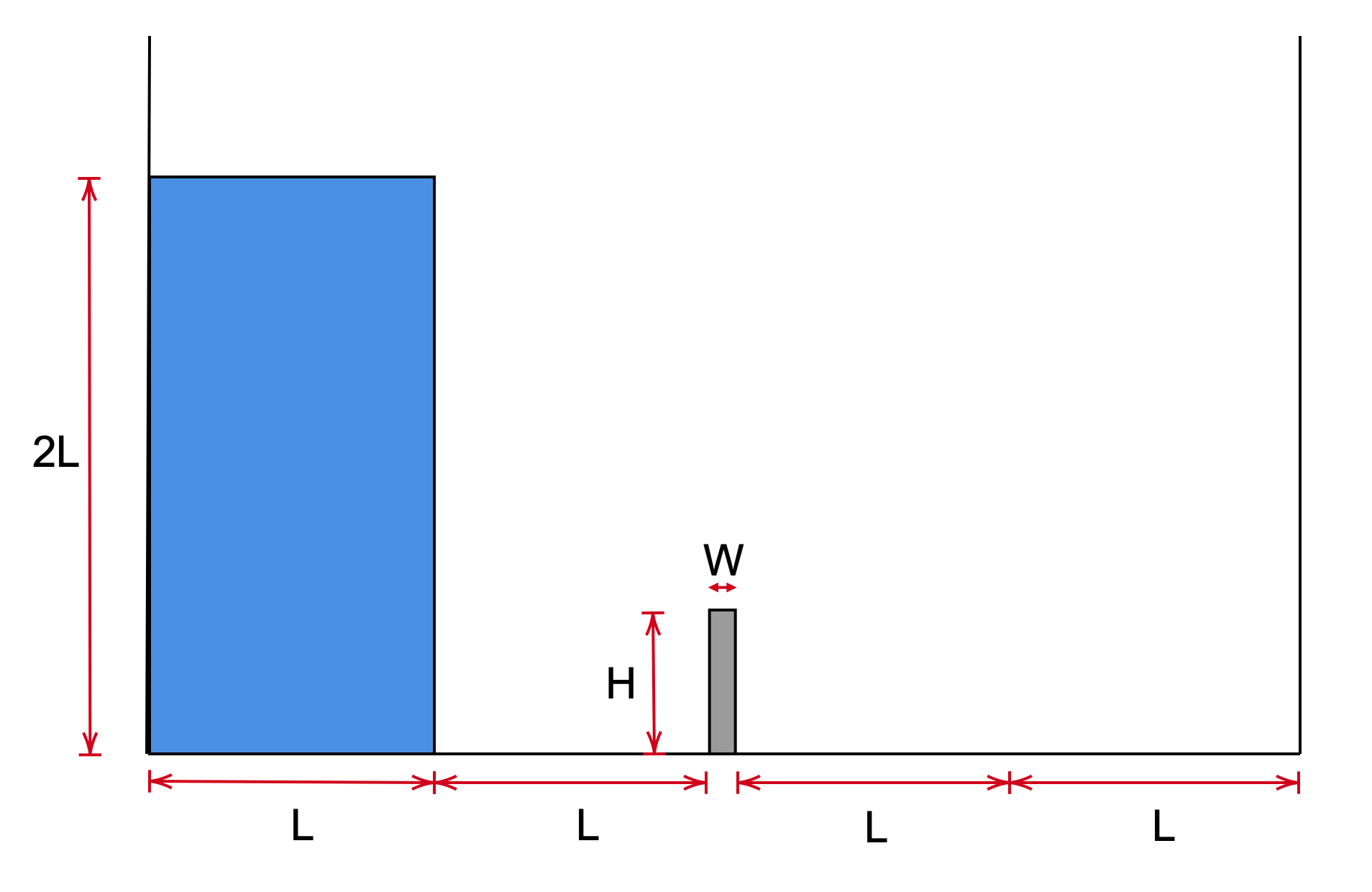Dam break against a flexible wall: flexibleDamBreak
Prepared by Amirhossein Taran and Philip Cardiff
Tutorial Aims
- Demonstrates how to perform a multi-phase fluid-solid interaction simulation
Case Overview
This case extends the traditional OpenFOAM damBreak tutorial to include a flexible dam. This benchmark has been examined several times in literature, including by Walhorn et al. [1], Meduri et al. [2], and Ryzhakov et al. [3]. The initial configuration of this example is shown in Figure 1, where a column of water is at rest located behind a membrane on the left side of a tank. At time \(t = 0\), the membrane is removed, and the column of water collapses. During the collapse, the water impacts a flexible obstacle (the "dam") at the bottom of the tank, causing it to deflect elastically. For benchmarking, the horizontal displacement of the dam is tracked over time. Table 1 provides the material properties and geometry data for reference. The solid component employs a neo-Hookean large strain constitutive law. The total Lagrangian solid model (nonLinearGeometryTotalLagrangianTotalDisplacement) is used as the solid solver, and the volume-of-fluid incompressible multiphase fluid model (interFluid) is used as the fluid solver.

Figure 1: Problem geometry and initial conditions
Table 1: Problem Physical Parameters
| Parameter | Value |
|---|---|
| Solid Young's Modules (\(E\)) | 1 MPa |
| Solid Density \((\rho)\) | 2500 kg m\(^{-3}\) |
| Solid Poisson Ratio \((\nu)\) | 0 |
| Fluid Viscosity\((\mu)\) | 0.001 Pa s |
| Fluid Density \((\rho)\) | 1000 kg m\(^{-3}\) |
| gravity | 9.81 m \(s^{-2}\) |
| L | 0.0146 m |
| H | 0.080 m |
| W | 0.012 m |
Results
Upon starting the solution, the water column collapses due to gravity and will hit the flexible dam. Video 1 shows the time evolution of the volume-of-fluid field in the fluid domain and the displacement field in the solid domain. The solids4foam predictions for the deflection of the top-right corner of the dam are compared with numerical solutions from the literature in Figure 2, showing reasonable agreement. For better agreement, a mesh and time-step independence study should be performed.
Figure 2: Displacement over time for the top-left corner of flexible obstacle (the "dam")
Video 1: Evolution of the volume-of-fluid field in the fluid domain and the displacement field in the solid domain
Running the Case
The tutorial case is located at solids4foam/tutorials/fluidSolidInteraction/flexibleDamBreak. The case can be run using the included Allrun script, i.e. > ./Allrun. The Allrun script first executes blockMesh for both solid and fluid domains (> blockMesh -region fluid and > blockMesh -region solid ), and the solids4foam solver is used to run the case (> solids4Foam). Optionally, if gnuplot is installed, the displacement history of the top-right edge of the obstacle Optionally, to create post-processing plots, it is possible to use solidPointDisplacement functionObjects, which will keep track of the specified point during the solution.
